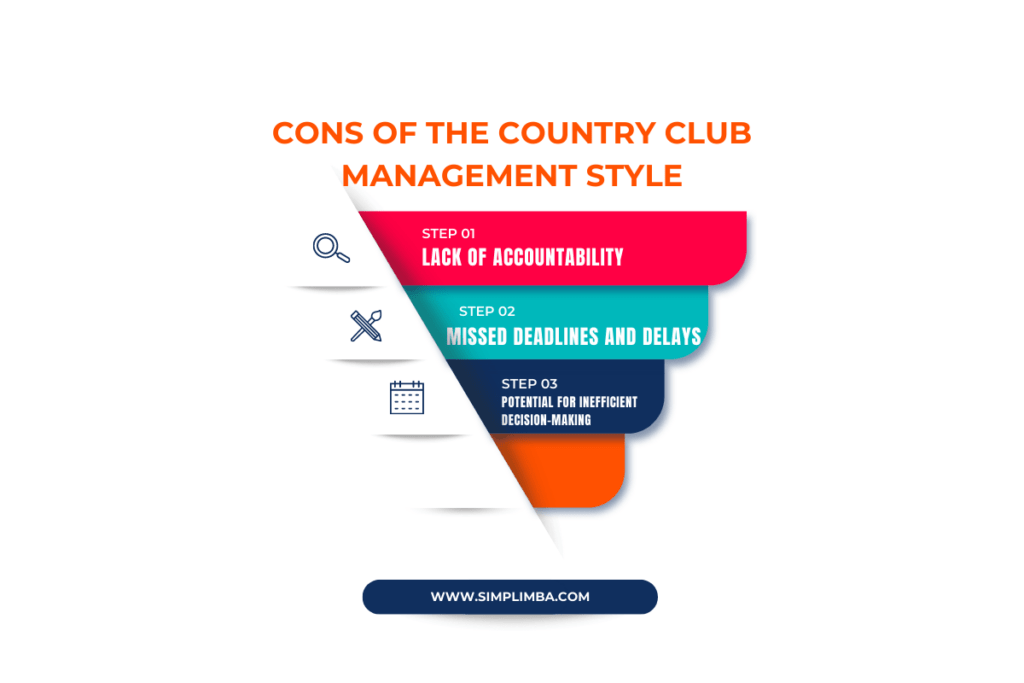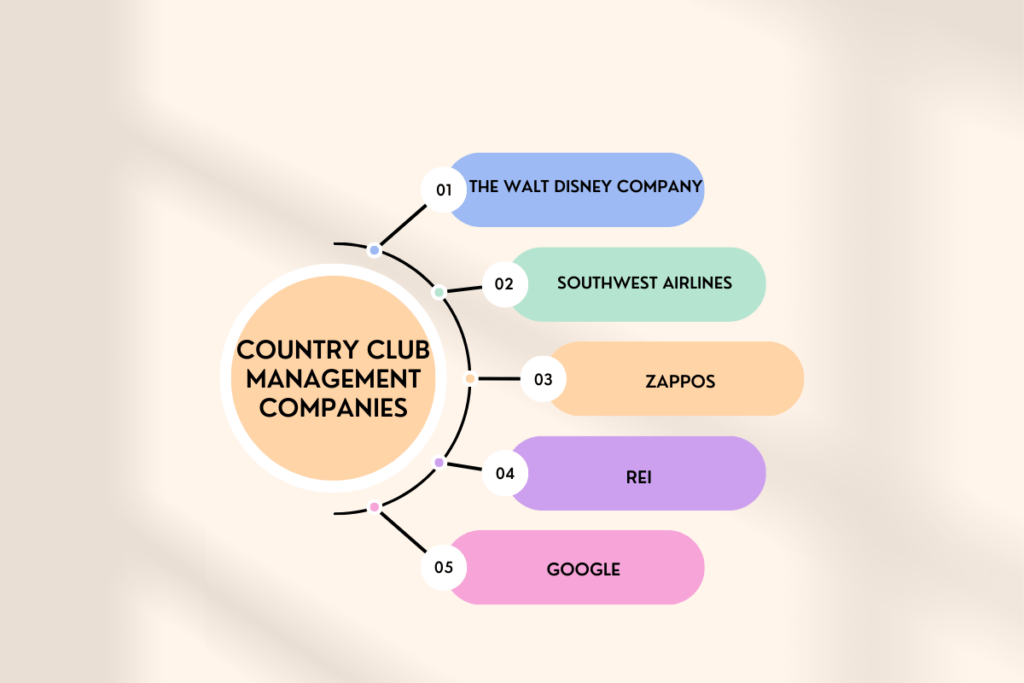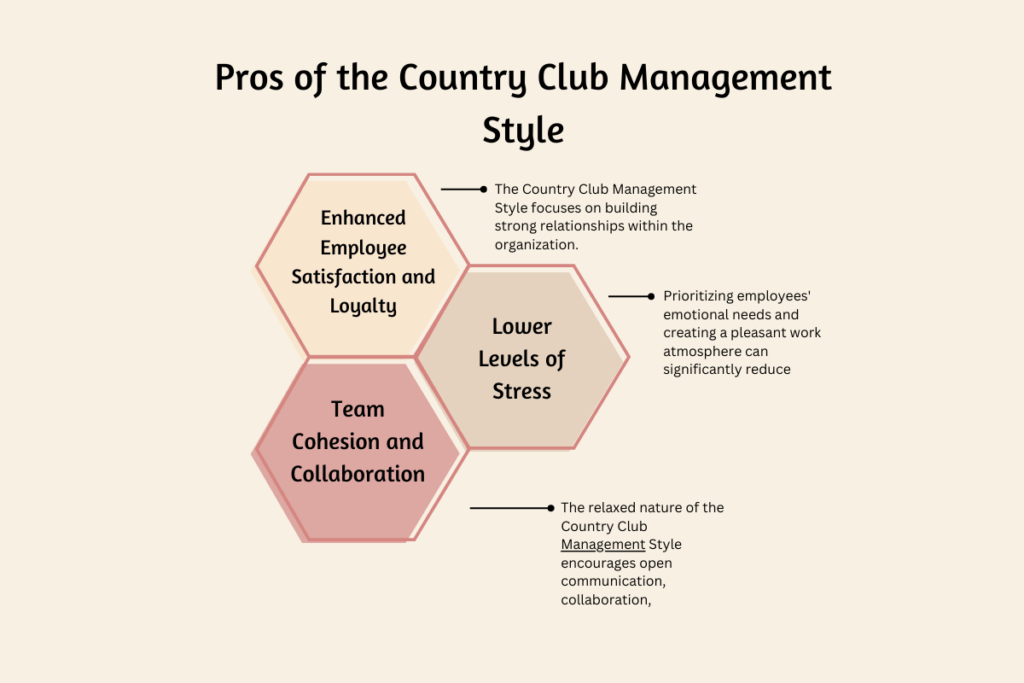Country Club Management Style: A Brief Overview
The Country Club Management Style can be categorized as a form of leadership known as the Relationship-Oriented or People-Oriented Leadership. This leadership style places a high emphasis on building and nurturing relationships with employees, creating a positive work environment, and prioritizing their well-being and satisfaction.
In the context of the Country Club Management Style, leaders focus on creating a welcoming and enjoyable workplace where employees feel valued and cared for. They strive to maintain harmonious relationships among team members, encourage collaboration, and promote a sense of camaraderie. This leadership style often involves open communication, active listening, and empathy towards employees’ needs and concerns.
The leaders practicing the Country Club Management Style aim to establish a supportive and nurturing environment where employees feel comfortable expressing their thoughts and ideas. They value the input and contributions of their team members, and their leadership approach revolves around creating a sense of belonging and job satisfaction.
However, it’s important to note that while the Country Club Management Style emphasizes the well-being of employees, it may sometimes neglect the aspect of driving productivity and achieving organizational goals. As a result, leaders practicing this style may need to strike a balance between fostering positive relationships and ensuring that productivity and performance are not compromised.
An Insight into the Country Club Management Style
In the realm of management, various styles and approaches have emerged over the years. The Country Club Management Style stands out as a unique approach that places a high level of concern on people but may often neglect production. This blog post aims to delve into the pros and cons of this management style, shedding light on its impact on organizational dynamics and success.
Understanding the Country Club Management Style
Coined by Robert Blake and Jane Mouton in the 1960s, the Country Club Management Style involves a leadership approach that prioritizes employee satisfaction and well-being over achieving high levels of productivity. Unlike other management styles, it aims to create a relaxed work environment that emphasizes harmonious relationships and employee morale.
Pros of the Country Club Management Style

1. Enhanced Employee Satisfaction and Loyalty
The Country Club Management Style focuses on building strong relationships within the organization. By fostering a sense of belonging and job satisfaction, this management style increases employee loyalty and reduces turnover rates. A stable and dedicated workforce can contribute to improved productivity and organizational success.
2. Lower Levels of Stress
Prioritizing employees’ emotional needs and creating a pleasant work atmosphere can significantly reduce stress levels among team members. This can enhance job satisfaction, overall well-being, and mental health, contributing to a more positive work environment.
3. Team Cohesion and Collaboration
The relaxed nature of the Country Club Management Style encourages open communication, collaboration, and teamwork. By promoting a sense of camaraderie, this management style improves cooperation, idea sharing, and problem-solving abilities among team members. This can lead to increased innovation, efficiency, and effectiveness within the organization.
Cons of the Country Club Management Style

1. Lack of Accountability
One of the key drawbacks of the Country Club Management Style is the potential lack of accountability. With a low emphasis on productivity and performance, employees may become less motivated to achieve their goals. This can result in a decline in overall organizational success. Without clear performance expectations and consequences, employees may become complacent, leading to a stagnant and unproductive work environment.
2. Missed Deadlines and Delays
While a relaxed atmosphere can boost employee morale, it may inadvertently lead to a lack of urgency and complacency. The Country Club Management Style may result in missed deadlines and delays in project completion due to a lack of pressure or motivation to meet targets. This could negatively impact the organization’s efficiency and ability to meet customer expectations.
3. Potential for Inefficient Decision-Making
The Country Club Management Style tends to prioritize harmony and consensus among team members. While collaboration is valuable, decision-making processes may become lengthy and convoluted due to an excessive focus on maintaining harmony. This can lead to delays in critical decisions and hinder the organization’s ability to adapt and respond to changes in the business landscape.
Case Studies: Evaluating the Country Club Management Style’s Impact
To gain a deeper understanding of how the Country Club Management Style can impact organizations, let’s examine two contrasting case studies:
Country Club Management Style Example: XYZ Corporation
XYZ Corporation implemented the Country Club Management Style, emphasizing a relaxed work environment and prioritizing employee satisfaction. While this approach initially improved employee morale and reduced turnover rates, the company faced challenges in meeting deadlines and achieving revenue targets. The lack of accountability and urgency compromised the company’s competitiveness, leading to a decline in overall performance.
Country Club Management Style Example: ABC Corporation
In contrast, ABC Enterprises applied the Country Club Management Style with careful consideration and balance. While promoting a positive work atmosphere and valuing employee concerns, the organization maintained clear performance expectations and provided feedback and recognition for productivity. This approach resulted in improved employee satisfaction, enhanced collaboration, and increased productivity, ultimately leading to greater customer satisfaction and profitability.
Country Club Management Companies
There are several companies and organizations that exhibit elements of the Country Club Management Style in their approach to leadership and management. It’s important to note that not all aspects of the Country Club Management Style may be evident in these organizations, as management styles can vary and evolve over time. Here are some examples:

1. The Walt Disney Company: Disney has a reputation for prioritizing employee satisfaction and creating a positive work environment. They are known for their emphasis on employee training and development, fostering a sense of belonging, and promoting teamwork among employees.
2. Southwest Airlines: Southwest Airlines is often recognized for its emphasis on creating a family-like culture and valuing its employees. The company is known for promoting a fun and relaxed work environment, while also maintaining high levels of customer service.
3. Zappos: Zappos, an online shoe and clothing retailer, has a strong focus on employee happiness and well-being. They are known for their unique company culture, which emphasizes positive relationships, open communication, and employee empowerment.
4. REI: The outdoor retail cooperative, REI, places a high value on employee satisfaction and work-life balance. They offer various benefits and programs to support their employees’ well-being, including generous vacation time and opportunities for outdoor activities.
5. Google: While Google is often associated with a more dynamic and innovative work culture, it also exhibits traits of the Country Club Management Style. The company emphasizes employee happiness and provides various perks, such as on-site amenities, flexible work options, and a supportive work environment.
Conclusion: Striking the Right Balance for Success
While the Country Club Management Style can offer advantages such as increased employee satisfaction and collaboration, it also carries potential drawbacks, including reduced productivity and accountability. To implement this style effectively, organizations must find the right balance between focusing on employee well-being and maintaining a sense of urgency and accountability. With a data-driven approach and proper guidance, organizations can harness the benefits of the Country Club Management Style while minimizing its potential disadvantages.
Samrat is a Delhi-based MBA from the Indian Institute of Management. He is a Strategy, AI, and Marketing Enthusiast and passionately writes about core and emerging topics in Management studies. Reach out to his LinkedIn for a discussion or follow his Quora Page

